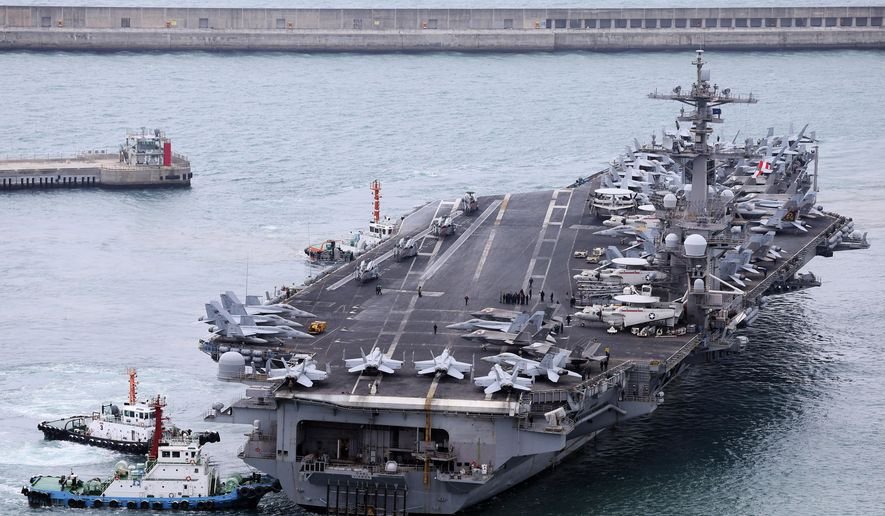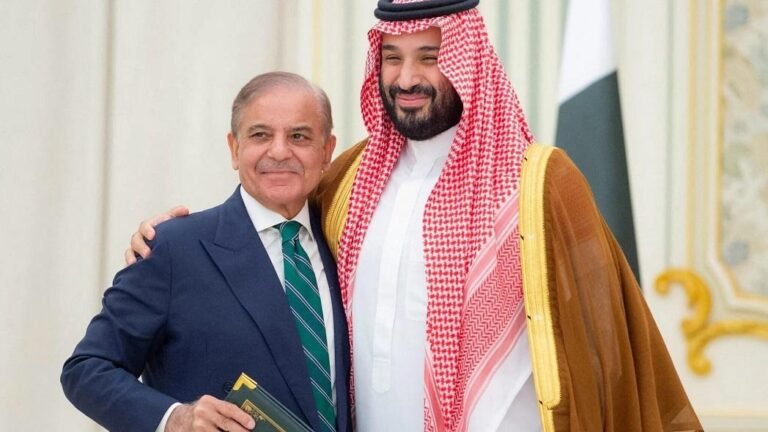The United States, South Korea, and Japan are conducting trilateral exercises this week – Advanced Air and Sea in East Asia, less than two weeks after the leaders of Russia, China, and North Korea issued an unprecedented challenge to the U.S.-led world order.
The Freedom Edge 2025 exercise, which takes place around Jeju Island in South Korea, aims to counter North Korea’s nuclear and missile threats and safeguard peace and stability in the region, South Korea’s Joint Chiefs of Staff reported in a press release.
The U.S. military’s Indo-Pacific Command in Hawaii said the exercise will be used to perfect ballistic missile defense between the United States and its two main Asian allies and represents the most advanced demonstration of trilateral defense cooperation to date, without giving details.
The five-day Freedom Edge exercises coincide with a major bilateral exercise between the United States and Japan, Resolute Dragon, which has seen Washington deploy missile launchers with enough range to hit from China to Japan.
Although the exercises are planned well in advance, they come less than two weeks after the leaders of China, Russia, and North Korea showed up shoulder to shoulder in Beijing for a military parade that showed China’s modern weaponry, including new ballistic missiles, and unprecedented solidarity between the three authoritarian nuclear-armed partners.
Increased direct cooperation with Russia has led to North Korea sending military and arms to help in its war in Ukraine, and Pyongyang and Moscow signing a mutual defense pact.
Many observers hope North Korea can benefit from Russian missile technology to advance its nuclear missile program.
Meanwhile, in its summary of talks between Chinese leader Xi Jinping and North Korea’s Kim Jong Un in Beijing, China did not mention the denuclearization of the Korean peninsula, a long-standing goal. Analysts say that indicates Xi’s tacit acceptance of North Korea as a nuclear power.

Both Freedom Edge and Dragon Resolute have received criticism from adversaries.
A statement from the North Korean Central Military Commission described Freedom Edge as “the offensive and most comprehensive exercise of aggressive warfare in terms of scale, content, and nature” that has taken place on the South Korean peninsula.
The United States and its allies are gradually undermining the security environment on the Korean peninsula, said Pak Jong Chon, vice president of the Central Military Commission.
For its part, China last month urged the United States not to send the Typhoon missile system to Japan for the Dragon Resolute exercises.
Analysts pointed to significant differences between the military parade show in Beijing and the current exercises being held with the United States and its allies.
Kim, Put, and Xi sent a clear geopolitical sign as they appeared shoulder to shoulder in a huge military parade in Tiananmen Square. That was symbolic of a shared willingness to advance power and interests in the face of external pressure, said Leif-Eric Easley, professor of international studies at Ewha Women’s University in Seoul.
In contrast, trilateral defense exercises between the United States, Japan, and South Korea are less political theater and more practical cooperation, Easley said.
And they are durable, said Hong Min, a lead researcher at the Korean Institute for National Unification in Seoul.
Security cooperation between South Korea and the United States, and between South Korea, the United States, and Japan, existed long before economic problems arose between Seoul and Washington, Hong said. He added that the three share the view that consistent responses and messages to North Korea and stable and continuous exercises are required.
In the case of Korea, those economic problems include the migrant raid on a Hyundai plant in Georgia that resulted in the arrest of hundreds of South Koreans, and in the case of Japan, a trade deal with Washington that some analysts say favors the United States.
Robert Ward, President of Japan at the International Institute for Strategic Studies, said the Dragon Resolute exercises send an important strategic message to China about the depth and breadth of U.S.-Japan security cooperation.
This year’s version of annual exercises is the largest since they started in 2021, Ward said.
“Given the uncertainties about U.S. trade policy, this is doubly important,” he added.
While exercises near Korea and Japan may be grabbing headlines at the moment, it’s remarkable that they’re just two from a long list of U.S. exercises and deployments in the region.
Last weekend, the U.S., Japan, and the Philippines armed forces completed their second set of maneuvers in the South China Sea in a month, reaffirming defense cooperation as tensions over China’s movements to strengthen its control over disputed waters escalate, according to a press release from the Philippine Armed Forces.
And last Friday, U.S. and British warships crossed the Taiwan Strait.
The Eastern Theater Command of the People’s Liberation Army accused the U.S. and British warships of provocation and problem-creating.
But the U.S. military said they were exercising navigational rights and freedoms on what is an international waterway.
Overall, the variety of exercises shows that the military solidarity that Washington often calls “fierce” seems to be so.
“This series of exercises represents the latest indicator of the growing cooperation and interoperability among U.S. allies in the Asia-Pacific region,” said Carl Schuster, former director of operations at the U.S. Pacific Command Joint Intelligence Center.
And, speaking specifically about trilateral exercises near Korea, the U.S. Indo-Pacific Command agrees.
The continued cooperation of the three nations tangibly demonstrates the unwavering strength and commitment to defending our vital interests in the face of shared threats and strengthens deterrence in Asia-Pacific by strengthening credible forces in combat,” he said.
With information from Yoonjung Seo, CNN.














